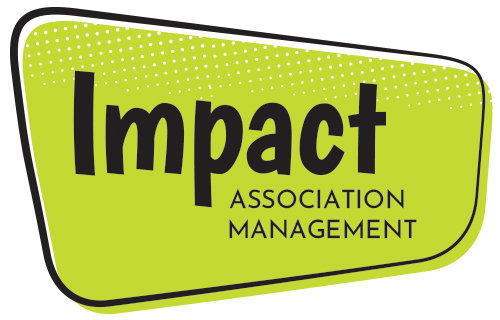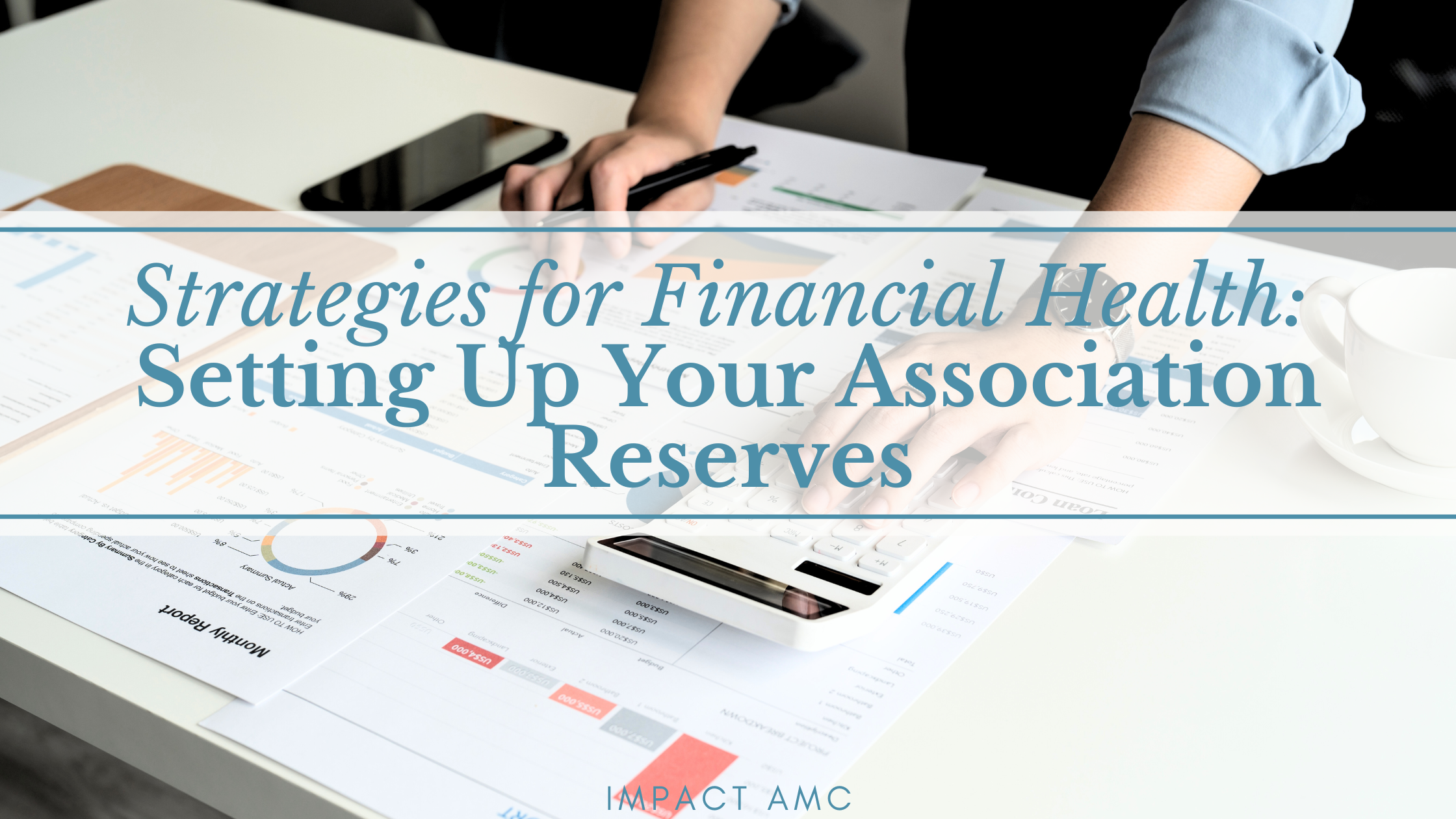By Ingrid Beamsley, Financial Specialist, Impact AMC
The financial health of your association is of the utmost importance, and Board of Directors must plan ahead to set the organization up for success now and in the future. Budgeting and forecasting are important first steps.
However, setting up a reserve for your association is also a critical step toward financial stability and ensuring your association can not only operate effectively, but also grow.
Nonprofits, Reserves and Common Practices
A typical goal for nonprofits is to set aside an operating reserve of at least 6 months expenses. Nonprofits should include a dedicated planned savings as part of the annual budget that will be used for reserves.
The following are items to consider:
Operating Reserves should be covered by FDIC Insurance up to $250,000 at current banking institution.
If coverage is needed past $250,000, explore FDIC Insured 3rd party cash management solutions, 3rd party money market funds or insured certificate of deposits.
Take advantage of maximizing the operating reserve by exploring interest earning accounts.
Use dividends and interest from long-term reserves to build short-term savings.
Looking Towards Investment Reserves
Beyond an operating reserve, how much should be set aside for investment reserves?
Association industry best practices include:
Investment Policy Statement Creation & Administration
Every nonprofit should have an Investment & Reserve Policy for both short and long term reserves.
Financial Modeling, Planning & Assessment
Investment Review, Management & Evaluation
Consider the following when setting up investment reserves:
Do not invest too many reserves in private equity & illiquid investments. This may result in high fees, unexpected cash needs and poor performance vs. investing in traditional stock and bonds.
Understand the total costs of maintaining reserves.
Explore Financial Advisor Management costs and services.
Explore all costs associated with banking cash & management solutions.
Analyze underlying investment costs of short & long term reserves.
Costs should not be higher than 1% of reserves received.
Review investments in long-term reserves to cover annual operating budget expenses. Operating expenses can grow faster than long-term reserves.
The Final Component
The last step is to educate new and rotating board/finance committee members on reserve goals. Review the Investment & Reserve Policy to ensure the needs of the nonprofit are consistently met.
Get Help from Financial Experts
Impact AMC Financial Specialists have many years of experience ensuring the financial stability and growth for nonprofit associations. Submit an RFP to discover how we can enable financial success for your association.

